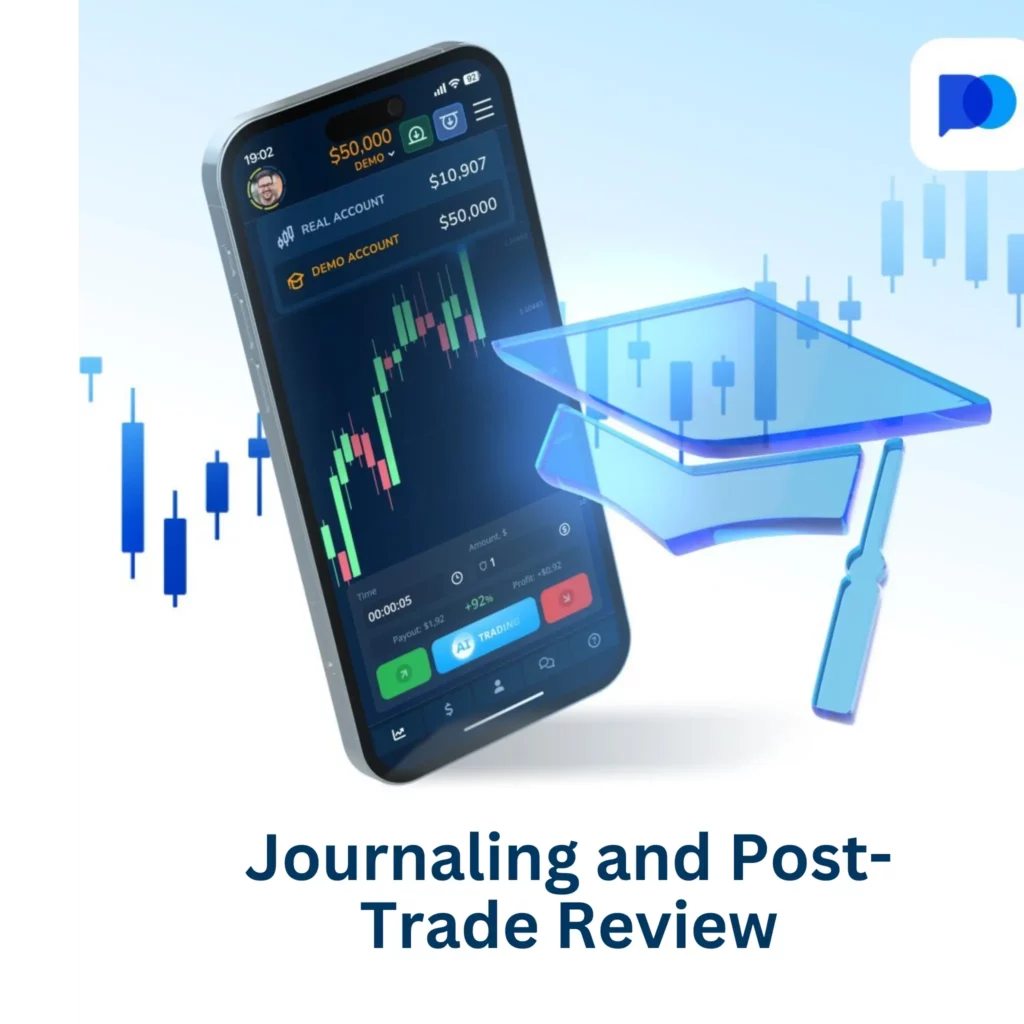Pocket Option Live Trading: Real-Time Strategies and Execution Guide
Pocket Option live trading gives users access to real-time market execution and decision-making. This guide walks you through the trading setup, tools, and methods to help you trade effectively under real market conditions. It also covers emotional challenges, risk control, and examples to support better results.
Table of Content Pocket Option Live Trading
- What Is Live Trading on Pocket Option?
- How to Start Live Trading
- Essential Tools for Pocket Option Live Trading
- Popular Pocket Option Live Trading Strategies
- Live Trade Example: From Setup to Execution
- Best Times to Use Live Trading on Pocket Option
- Demo vs Live Trading: What Changes?
- Psychological Aspects of Real-Time Trading
- Live Trading Success Tips
- Frequently Asked Questions (FAQ)
What Is Live Trading on Pocket Option?
Live trading on Pocket Option means placing real-money trades based on current market movements. Unlike demo trading, it involves actual funds and real-time execution — so speed, timing, and accuracy matter more. You trade directly on live charts, using technical tools, economic news, and personal strategies to react instantly to market conditions.
How to Start Live Trading
Before placing live trades, you need a verified account and a funded balance. The platform’s setup process is quick, and the interface is designed for intuitive use.
Step 1: Register and Verify Your Account
Create an account on Pocket Option using your email or social media. Then, go through the identity verification process. This step is mandatory for withdrawals and unlocking full access to live trading features.
Step 2: Fund Your Trading Balance
Once verified, deposit funds into your trading account. Pocket Option supports various methods including bank cards, e-wallets, and crypto. Choose your preferred method and ensure the amount meets the platform’s minimum deposit requirement.
Step 3: Access the Live Trading Interface
Go to the trading dashboard. You’ll see a live chart, asset list, indicators, and controls to set trade parameters. This interface is where all real-time decisions and executions happen.
Step 4: Choose an Asset and Set Trade Parameters
Pick a trading asset from the list — such as currencies, stocks, or crypto. Then configure:
- Trade amount
- Expiry time (for time-based trades)
- Direction: Up or Down (for binary options)
- Any indicators or tools you want active
Once set, you’re ready to place your first live trade.
Essential Tools for Pocket Option Live Trading
Pocket Option offers a range of built-in tools to support live trading decisions. These features help traders analyze price movement, monitor sentiment, and stay updated on market events.
Live Charts and Timeframes
The platform includes interactive live charts with multiple timeframe options — from 5 seconds up to 1 day. You can zoom in for precise entries or zoom out to identify long-term trends. This flexibility is useful for both scalpers and swing traders.
Technical Indicators Available in Real Time
Pocket Option provides over 30 real-time indicators, including:
- Moving Averages (SMA, EMA)
- RSI, MACD, and Stochastic
- Bollinger Bands and Parabolic SAR
- Volume and Momentum tools
These indicators can be added to your chart instantly, and settings can be customized to match your strategy.
Market Sentiment Widget
This tool shows how other traders are positioning themselves — the percentage choosing “Up” vs “Down” on a selected asset. While not a guarantee, sentiment data can help confirm or question your decision.
Economic Calendar and News Feed
Stay informed on key financial events with the built-in economic calendar. It displays upcoming news, expected impact, and release times. You can also access a live news feed that provides updates relevant to market conditions — especially useful for trading around volatility spikes.
Popular Pocket Option Live Trading Strategies
These proven strategies work well with Pocket Option’s live trading features. They combine indicators, price zones, and event timing to identify high-quality trade setups.
Use a short EMA (e.g., 9) and a longer EMA (e.g., 21) to define trend direction. Confirm entry using RSI — for example, trade only when RSI aligns with the EMA trend and exits oversold or overbought zones.
Mark key horizontal levels on the chart. When the price hits support or resistance and shows signs of rejection (e.g., candle wicks or reversal patterns), look for entry in the opposite direction.
Trade during high-impact news releases using the economic calendar. Watch for fast price movement and wait for a pullback before entering. This method works best with clear direction and strong momentum.
No strategy works without proper risk control. Use a fixed percentage of your balance per trade (e.g., 2%) or define a stop-loss amount if using longer expiry. Managing loss is more important than chasing profits.
Live Trade Example: From Setup to Execution
This section walks through a simple live trade from beginning to end. It highlights key decisions and how to manage a trade in real time.
You decide to trade EUR/USD. The asset shows a strong uptrend confirmed by the 21 EMA and RSI holding above 50. You wait for a slight pullback and identify a horizontal support level — this becomes your entry zone.
You choose a 5-minute expiry and set your trade amount to 2% of your balance. As the price bounces off the support level with a bullish candle, you place an “Up” (Call) trade.
During the 5-minute duration, you watch the candles form. If the move is strong, you hold. If price stalls or reverses, you prepare to adjust your next trade. After expiry, you review the result and note what worked or what should change in the next setup.
Best Times to Use Live Trading on Pocket Option
Timing can impact the success of your trades. Knowing when to be active — or when to wait — makes a big difference in outcome quality.

Most Active Trading Sessions
The best sessions for live trading are:
- London Session (08:00–16:00 GMT) – high volume in forex and European assets.
- New York Session (13:00–21:00 GMT) – overlaps with London for volatility and liquidity.
- Asian Session (00:00–08:00 GMT) – active in JPY and AUD pairs, but generally slower.
These sessions provide cleaner trends and better price action.
Volatile Hours for High Payouts
High-impact news releases — like central bank decisions or employment data — often cause rapid movement. These moments offer high payout potential but also demand quick reactions. Use caution and trade smaller if unsure.
When to Avoid: Low Liquidity or Unstable Markets
Avoid trading during:
- Weekends or late Friday hours
- Public holidays with closed markets
- Overlapping session breaks (e.g., after London closes but before New York heats up)
These periods tend to show slow, erratic, or “choppy” price action that reduces trading accuracy.

Demo vs Live Trading: What Changes?
Switching from demo to live trading on Pocket Option feels bigger than it looks. While the platform stays the same, your reactions and results often shift — mostly due to emotional and market factors.
Emotional Pressure and Decision Speed
In demo mode, it’s easy to stay calm — there’s no real money involved. Once you go live, pressure kicks in. You might overthink, exit early, or hesitate. Managing emotions becomes just as important as reading charts.
Market Conditions and Order Execution
Live trading uses real market liquidity. That means:
- Slight price slippage can occur
- Expiry timing becomes more precise
- Spreads or trade entry price may vary slightly from demo
These differences are small, but they matter when trading fast-moving markets or using short expiries.
Transition Tips: From Practice to Real Trades
Make the move gradually. Start with small real-money trades while still practicing in demo. Stick to one or two strategies you’ve tested. Keep using the same risk rules from demo — consistency builds confidence.
Psychological Aspects of Real-Time Trading
Trading live isn’t just about strategy. It’s about staying sharp, calm, and clear-headed — especially when things go off-script.

Common Emotional Traps
Many traders face:
- Overconfidence after wins — leading to reckless entries
- Revenge trading after losses — chasing lost money with poor setups
- Fear of missing out (FOMO) — jumping in too late on strong moves
Recognizing these patterns early helps break the cycle.
Maintaining Focus Under Pressure
Live trading needs full attention. Avoid distractions and don’t multitask. Use short sessions if needed. Take breaks to reset after high-stress moments — especially after a loss or a big win.
Journaling and Post-Trade Review
Keep a trading journal. Write down:
- Why you took the trade
- What went well or poorly
- What to adjust next time
This habit improves discipline and gives you clarity over time. Your best lessons often come after the trade is over.

Live Trading Success Tips
Consistency in live trading comes from preparation, discipline, and sticking to your process — not from chasing every price move. These tips can help you build a more stable trading routine.
Prepare Before Market Opens
Check the economic calendar, review charts, and update your watchlist before trading begins. Knowing where key levels are and what events could move the market keeps you one step ahead.
Set Daily Loss/Win Limits
Define your max daily loss and stop trading once it’s hit. The same goes for wins — if you reach your daily profit goal, step away. This prevents emotional decisions and helps you trade with a clear mind the next day.
Don’t Chase the Market
If you miss an entry, wait for the next setup. Entering late just to “be in a trade” usually leads to losses. Let the market come to you.
Use Analysis Before Each Entry
Whether it’s a support level, EMA crossover, or news event, always have a reason to enter. Random trades drain your account and your confidence.
Frequently Asked Questions (FAQ)
Can I trade live without verifying my account?
No, you must verify your account before using real funds. Verification is required for withdrawals and ensures secure access to live trading features.
How much money do I need to start live trading?
The minimum deposit on Pocket Option varies by payment method but usually starts from $10. You can begin with small amounts while applying proper risk management.
What are the best indicators for live trading?
Popular choices include EMA for trend direction, RSI for overbought/oversold signals, and Bollinger Bands for volatility. Use indicators that match your strategy, and don’t overload your chart.
Is it safe to go live as a beginner?
It’s safe if you use risk limits, trade small, and avoid emotional decisions. Start with basic setups and practice in demo until you’re confident.
Can I earn consistent income with Pocket Option live trading?
It’s possible but not guaranteed. Consistency takes time, discipline, and a solid strategy. Treat trading as a skill to develop — not a shortcut to instant profits.
